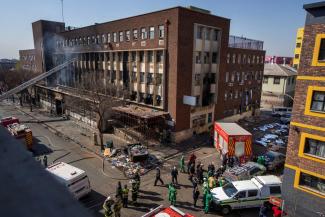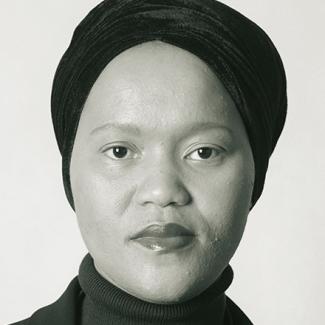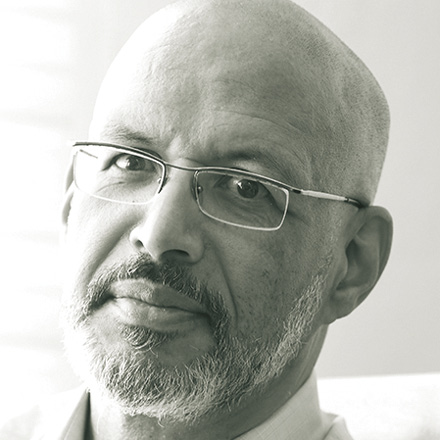Urban housing
“A story of abandonment”
Nomzamo Zondo interviewed by Eva Dick
 picture-alliance/ASSOCIATED PRESS/Jerome Delay
picture-alliance/ASSOCIATED PRESS/Jerome Delay
What happened to the residents of Usindiso Shelter in the night of the fire? Where did they go?
The City of Johannesburg immediately provided buses to put people in what they call the shelter. In fact, it is a community hall in one of the suburbs of Johannesburg called Bezuidenhout Valley, which is about seven kilometres away from the Central Business District where Usindiso Shelter is located. People initially resisted to move there. Those whose rooms had not been burned down didn’t know when they’d be able to access their belongings. Others wanted to see the full picture and find out who of the people they knew had been found and who had not.
At least about 250 people were taken to the shelter – including families with small children. Some of them were distributed into other shelters from there. The circumstances were overcrowded from the beginning, people didn’t feel comfortable. Some who had friends living in other unlawfully occupied buildings made plans to go there. I heard of one family that had gone to live under a bridge next to a taxi station outside Johannesburg.
How did the situation develop in the weeks and months after?
Two months later, about 70 people were still living at the Bezuidenhout Valley shelter. The rest had gone into other unlawfully occupied buildings. According to some of them, even after two months there hadn’t really been a coordinated response from the City of Johannesburg, for example assisting those who had lost family members. However, Usindiso Shelter is owned by the City, so they are the ones who must answer to this.
There was an announcement that the City would engage with those who had been hospitalised. However, during their time in hospital, they didn’t get any assistance. Also, there were issues with the victims’ belongings. Some of them tried to get into the building but wouldn’t be able to. When the building was being opened up, some found their belongings had been stolen.
Many people believe that the residents were treated in an inhumane way because there was an assumption that they are migrants – and therefore not worthy of a humane government response. At the Socio-Economic Rights Institute of South Africa (SERI), we tried to call this out both in the media and in our own engagements with the City.
On the same day of the fire, SERI released a press statement asserting that Usindiso Shelter was an “example of how the City deals with its shelters”. What did you mean by this?
The City, in all the buildings that it owns, likes to give the impression that they have lost control of these buildings. However, there is evidence that they didn’t lose control but rather deliberately abandoned them. Even though the City was requested to assist and had proposals of what should be done, they decided to do nothing. That’s why, in our view, Usindiso tells the story that we know – a story of abandonment. I find this very frustrating. When you look at the conditions at Usindiso, for example the accessibility of services, there was an opportunity for the City. They could have used that building to properly house inner-city residents who are in need of accommodation.
When the City decides that a certain building is unsafe, its position is that residents need to be evicted. However, they often don’t know where to go. People have a right to access to adequate housing. If they cannot afford accommodation, the state has an obligation to provide it. That is drawn from South Africa’s Emergency Housing Programme which is a specific policy in the National Housing Code.
What can the Emergency Housing Programme be used for and what has the City done so far?
The City hasn’t fully utilised the Emergency Housing Programme yet. In my opinion, they are not acting according to the obligations that the courts have imposed on them when it comes to rehousing people. They only have provided accommodation in instances where courts have ordered them and haven’t done anything to address unsafe housing conditions, even though the Emergency Housing Programme allows to use its funds to make buildings and houses safer – for example, by making sure that escape ways are clear, and the firefighting equipment is available. The fire hydrant, for instance, must have the correct pressure and be connected to all the floors. Where the City renovates a building, it should ensure sufficient access to water and sanitary facilities so that the residents stay in healthy conditions. Only where conditions are unsafe and refurbishment is not a feasible solution should the City relocate people to another building.
This sounds like larger investments are necessary. What about funding?
Municipalities can apply to be granted means by the Emergency Housing Programme’s fund to respond to an emergency situation. The programme specifically records evictions as emergencies. However, municipalities have not utilised the programme for evictions arguing that they do not count as such. Their outlook is likely grounded in the fact that when you hear the word emergency, of course, you think of unexpected events like floods and fires. In contrast, the court process for forced eviction normally takes two years, in some cases up to 15 years. It can be a very long process.
Urban housing crises cannot be solved by city governments and administrations alone. What kind of action is required from the South African national and provincial governments?
The National Department of Human Settlements has the task of guiding municipalities and provinces in implementing the National Housing Code. While I feel like Johannesburg’s municipality has behaved rather recalcitrant, both the national and the provincial government have not performed well either. They have been invisible. They have seen that the city has been failing and struggling with this issue but have continued to stand on the side-lines.
Please specify.
SERI has been calling on both the national and the provincial governments to bring their expertise and resources to the table to help Johannesburg resolve its housing crisis – for instance, address the problem that the City needs to relocate residents from buildings that are a risk to their lives but has problems to find buildings to accommodate them. In this case, the Department of Public Works and Infrastructure could be of help. It holds all the state-owned property, so it can explain how many of those properties are available and what would be needed to renovate them so that the City can make use of them.
How can non-state actors such as SERI contribute to safe housing in inner-city Johannesburg?
Immediately after the fire at Usindiso Shelter, we made use of our network and asked professionals like architects and others to assist with the redesign. There are several non-profit organisations willing to work with residents to make buildings safer. Such commitment could become more effective if the state provided more support. SERI has been working with inner-city residents for more than 10 years. We are available to help residents, civil-society organisations, the City and the state to join hands and tackle Johannesburg’s problems together.
Can the catastrophe at Usindiso Shelter serve as a wake-up call?
During apartheid, the Usindiso Shelter served as the pass office whose officials could decide whether “natives” were worthy of entering Johannesburg. The fire reminded us again that little progress has been made to move us away from that past. Perhaps this is a wake-up call to ensure that the inner-city poor are treated with the dignity that was so steadfastly pursued before the end of apartheid in 1994.
Nomzamo Zondo is a human-rights lawyer and director of the Socio-Economic Rights Institute of South Africa (SERI).
nomzamo@seri-sa.org



